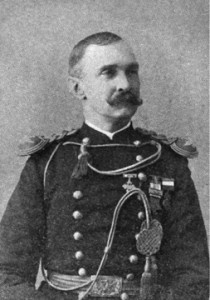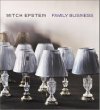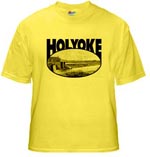by Laurel | December 20th, 2011
20 December 1903
Co. D’s Quarter-Centennial
Sketch of Its History — The First Roster — The Men Who Have Served as Captains.
The annual banquet of Co. D. Thursday evening marked the completion of the first quarter of a hundred years of its history. Its beginnings, however, we not the first of Holyoke’s militia history, as another company, old Co. K, had existed and died a peaceful death about two years before Co. D was organized, Dec 17, 1878. This was a company in the old 10th battalion, but reorganization changed things about. The old Co. K meeting place was in the Parsons Hall building at the foot of Dwight Street, but the new company when organized met in the city hall, then but a year or so completed, having as rooms at first the quarters now occupied by the tax collector, water department and the overseers of the poor. The city hall was used, as now, for drill. Col. E. P. Clark was captain of old Co. K and also the first captain of the new Co. D, though the captaincy was not held by him for a long time.
The menu cards at the Anniversary Banquet last evening contained a facsimile copy of the order authorizing Col. (then captain) Clark to recruit a company. It was as follows:
Boston, December 9, 1878
Special order No. 192
Embury P. Clark of Holyoke is hereby authorized to recruit a company of infantry in that city. We will require the signature of all recruits to the enlistment book, and whenever the number of forty-one (41) shall have been recruited, will fore ward the assigned roll to this office.
By order of the commander in chief.
J. S. Cunningham, Adjutant-General
The company this recruited was not as large as today. Its makeup both as to officers and men was as follows:
Officers: Captain, Embury P. Clark; first lieutenant, Charles D. Coison; second lieutenant, William J. Allyn; first sergeant, Charles H. Flanders; second sergeant, George E. Whitaker; third sergeant, Matthew Cook; fourth sergeant, A. F. Sickman; fifth sergeant, Eugene H. Whitcomb; first corporal, Gilbert E. Russell; second corporal, Elwin D. Newcomb; third corporal, George Maxwell; fourth corporal, William A. Hebert; musician George Burnham.
Privates: Gove C. Ainslee, Leroy M. Bishop, Judge S. Burroughs, John W. Bennett, Charles E. Bullock, Charles W. Brown, Eugene L. Bowe, Frank H. Barber Edwin E. Bartlett, George A. Blake, John T. Carroll, Nelson C. Cook, Orange W. Chapin, Edward Donahue, Wilbur T. Dean, Charles Ely, Joseph H. Fowler, Arthur M. French, Ezia F. Hall, James R. Howes, Charles E. Haskell, Seymour Jones, William L. Ladd, W. H. H. Marsh, Thomas G. Moore, Joseph W. Moore, Dennis Mack, Henry Stebbins, Edward C. Smith, Daniel H. Smith, Albert F. Sickman, Samuel P. Tucker, James R. Worthington, William O. Wood, John E. Wheeler.
These were added later: Pierre De Peyster, Edward R. Winters, William H. Strain, Daniel Hogan, Jasper Harris, Adam Hurdis, Flavius J. White, Wallace H. Johnson and George Ruddy.
The captains of the new company were changed quite often during its early history, but the last few have all served long terms. Capt. E. P. Clark (1878-9) was succeeded by Dwight O. Judd, new department commander of the Grand Army of the state, who was elected from civil life. He was succeeded by Capt. William J. Allyn, son of James F. Allyn and brother of Edward, C. G. and David Allyn, yet living. Capt Allyn was the last of the “short timers,” being succeeded by Capt. Charles W. Brown, whose term of service, beginning in 1881, continued until 1893. At that time re resigned on account of locating elsewhere. Capt. Brown was highly thought of by the boys, but his repeated absences for the year or so previous to his resigning and the struggle for the vacant captaincy left the company in rather bad shape for his successor. Fortunately the next man that it was Co. D’s lot to have as captain was not afraid of work and was not easily discouraged. he was Capt. William J. Crosier, who little imagined probably when he took command that his administration would be the only one in which the boys would taste real warfare in the whole 25 years of their history. It was 1894 when he took charge, and the company, then in a generally run-down condition, was slowly built up on a solid basis, that placed it in the splendid shape with which it entered the Spanish war of 1898. Having served five years and the company having reached a satisfactory degree of efficiency, Capt. Crosier, to the great regret of the men and of the citizens of the city, decided to resign.
The present captain, Frank D. Phillips, has works up from the ranks to the position of captain. He joined the company in September 1885 and in 1888 joined the headquarters staff and was for the four years ending 1896, sergeant major. In August, 1896 he rejoined the company, first as a private, and on December 2 of that year was commissioned 3d lieutenant. He was elected captain of the company July 18, 1899, on the resignation of Capt. W. J. Crosier. At or about the same time Capt. Crosier resigned, the 1st lieutenant Robert W. Hunter also resigned. The selection has proved a very happy one, and the company is at present in excellent condition. During the past year the quarters of the men have been made over in the city hall, and the reception room or parlor has been nicely fitted up, making a fine club-room for the men. There is a piano in the room, which is carpeted, supplied with reading matter, and with some good pictures on the walls. There is also a card and smoking room adjoining the gun room, and the lockers for the men are of the latest pattern. Still, the Co. D men are looking forward to the day when they shall have an armory for themselves, and the weary climb to the top of the city hall building shall be a thing of the past.
The company’s most notable tour of duty aside from the Spanish war, was in 1897, when it was fortunate enough to be called to join in the Grant memorial parade at the time of the acceleration in honor of the completion of the Grant memorial tomb in New York city. Fortunately in the history of the company it has never been called upon to suppress riots in Holyoke, the strikes in Holyoke being peaceful and not needing the military arm of the government. The militia call in Holyoke is “9-9,” and these strokes have never been struck but once so far as can be learned, and that as a test of the effectiveness of the call, under Capt. Crosier. At that time in 45 minutes, 80 per cent of the company had responded, which is considered to be a remarkably good showing. In real wartime Co. D. played an important part, the 2d regiment, under Col Clark, having an important place in the fighting about Santiago and at El Caney; and several of the boys succumbed to Spanish bullets or the deadlier fever in the hospitals. The intense interest in the company was manifested both when the accompany went to war, and when it returned, when it was greeted by immense crowds of friends and sympathizers. the support of the company has always been hearty and genuine, and has been well deserved of.
With its new rifle range Co. D hopes eventually to make a better record for itself with the rifle than it has in the past few years. The record is not one to be ashamed of, but naturally enough the company looks toward at some time landing nearer the read of the regiment than it has been doing. In its day Co. D has had men of some mark in shooting; notably Willard M. Farrell, who was a member of the company under Capt. Brown, and who in 1889 was a member of the state rifle team that won trophy after trophy in England. He used to keep a gunshop in the Whitcomb building, but is now inspector of rifle practice of the national guard in the District of Columbia. The first rifle range of the company was on Beech Street where shooting began in 1880. There was then only a 200 yard range, and the growth of the city made it necessary to seek new quarters. Uniting with the Holyoke Rifle Club, in which Ira Mattice, W. M. Foster, W. S. Beeching and others were interested, a range was leased in 1888 or 1889, at Willimansett, where rifle practice was carried on until 1909, when the range at Cherry Street was opened. This has a 200, 500 and 600 yard range, and is in excellent condition with rifle shed and fill equipment of targets and the like.
Adapted from The Springfield Republican, image from the public domain.









